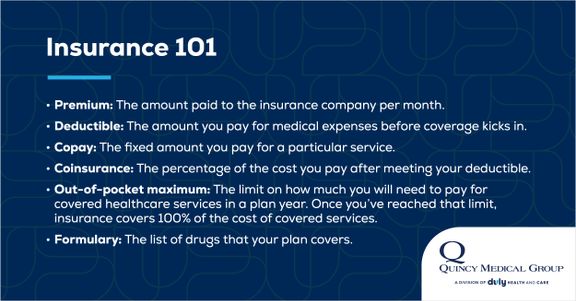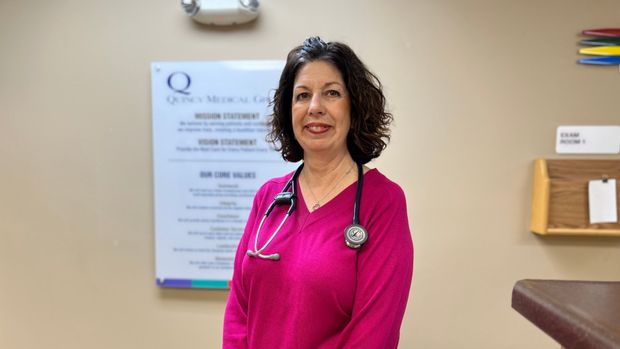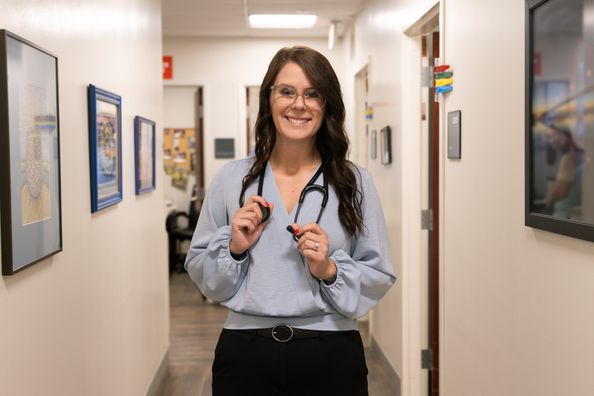For years, it seemed like school would never end. Yet before you knew it, you’ve said goodbye to your last class and you’re getting your adulting on.
Becoming responsible for your own healthcare might not be first on your to-do list just yet – but it should be in one of the top spots.
Navigating healthcare can be overwhelming, but it’s important. Here are five things to do as you start taking charge of your own care:
1. Choose a Primary Care Provider (PCP)
The first step is understanding the two types of PCPs who treat adults. Internal medicine providers (internists) typically only see adult patients. Family medicine providers care for patients of all ages, from infancy to adulthood.
Both types of providers are well equipped for your primary care needs. It comes down to finding which one best fits your individual needs and preferences.
An internist may be right for you if you have multiple chronic conditions, have healthcare concerns that are more common in adulthood (like family planning), or need specialized care for conditions like diabetes or heart disease.
A family medicine provider may be the right choice if you are interested in overall wellness, plan to have children and want your whole family to see the same provider, or already see a family medicine provider and don’t want to switch providers.
It’s okay if you don’t have a preference. You might be more interested in prioritizing factors like when they’re available or which languages they speak, so you don’t necessarily need to limit your search to just one type of provider.
Also read: Importance of Having a Primary Care Provider
2. Don’t Be Afraid to Shop Around
In some cases, like if you have urgent medical concerns or need to have a form filled out, you may need to see the first provider available. But in general, it’s best to do a little research before choosing a provider.
Some of the criteria to consider include:
- Availability, including if they have night or weekend hours or if they do telemedicine
- Location
- Insurance they accept
- Gender
- Language(s) spoken
- Ages they see
- How long it usually takes to get an appointment
- Specialty training, like additional training for a specific disease
If they specialize in working with people in certain populations
Many health system websites have “Find a Doctor” features where you can filter searches, but you can always call the office or ask your pediatrician for recommendations, as well.
Remember that not every provider is the perfect fit. Whether you want a second opinion or simply don’t click with your provider, start your search up again. It may be a little extra work, but it’s best to have a provider you’re comfortable with and trust.
Read on Duly Health and Care: So You Want to Make Your Own Doctor’s Appointments
3. Stay On Top of Your Regular Appointments
It can be easy to forget about your annual physical when you no longer need one for school or your parents aren’t scheduling them for you.
Getting a physical every year is critical if you have a chronic medical condition. Your provider can monitor how you’re doing and make sure you’re still getting the correct treatment. Even if you don’t have a chronic condition, a yearly physical allows your provider to catch early signs of a condition or illness. An annual physical is also a good way to learn about improving your overall health and to strengthen your relationship with your PCP.
If you see a specialist for a medical condition, it’s just as important to keep up with those appointments since a condition can evolve as you get older and your body changes. Your specialist might also need to see you on a regular basis to refill prescriptions. They may want to see you more than once a year, or they might only need to see you every few years. Either way, don’t miss any appointments.
Also read: Importance of Having a Primary Care Provider
4. Learn the Basics of Insurance
If you’re in your early 20s and on your parents’ insurance, you may be in luck – you can stay on their plan until you turn 26. But after you turn 26, or if you’re looking to get your own plan, it’s natural to feel like a fish out of water.
Insurance can be a complex topic, and it can take a while to get a grasp on it. While you learn, there are some basic terms to become familiar with.

- Premium: The amount paid to the insurance company per month.
- Deductible: The amount you pay for medical expenses before coverage kicks in.
- Copay: The fixed amount you pay for a particular service.
- Coinsurance: The percentage of the cost you pay after meeting your deductible.
- Out-of-pocket maximum: The limit on how much you will need to pay for covered healthcare services in a plan year. Once you’ve reached that limit, insurance covers 100% of the cost of covered services.
- Formulary: The list of drugs that your plan covers.
There are several types of health insurance plans. Some of the most common are:
- PPO (preferred provider organization), which offers coverage in a selected network of providers. You can often get some coverage for care outside of the network, but you will need to pay more out of pocket.
- HMO (health maintenance organization), which limits coverage to providers within a specified network. Except in an emergency, HMOs won’t cover any percentage of out-of-network care. If you need to see a specialist, you will need to get a referral from your PCP, first.
- HSA (health savings account), which is a tax-exempt savings account solely for medical expenses (including dental and vision).
Read on Duly Health and Care: Premiums, Deductibles, Out-of-Pocket Costs, Oh My!
5. Always Be Prepared
You may be done with school, but there’s still homework to be done. Before your appointment (especially if it’s with a new provider), make sure to:
- Check ahead of time that they take your insurance. You may want to check with both the provider and your insurance company.
- Have a list of questions.
- Schedule follow-up appointments as soon as you can.
- Bring necessary documents for seeing a new provider, including a photo ID, insurance card, your personal and family medical history, and any medical records from other health systems.
You can always reach out to your healthcare system or providers’ offices for help. Taking charge of your own healthcare might come with challenges, but you’re not alone.
Ready to schedule your annual physical? Learn more about primary care at Quincy Medical Group or request an appointment online. You can also call our Primary Care Access Line at (217) 222‑6550, ext. 3325, for assistance with finding a provider.
Health Topics:








